Birdata has recently moved to a new platform, and some of the information below is out of date. Please hold tight while we update this in the coming weeks. In future, we will be doing a full refresh of this content. An updated page is nearly ready, and will be published in February. We are also currently reviewing and rewriting our Sensitive Species Policy.
As the holder of a large amount of bird biodiversity data, BirdLife Australia has a responsibility to ensure that the data it collects, especially sensitive data, is managed appropriately. This means minimising any potential harm to birds by protecting location data for sensitive species from inappropriate use. Birdata complies with BirdLife Australia’s Sensitive Species Bird Data Policy (in preparation).
The management of sensitive data is integral to ethical data management. Biodiversity information, where appropriate, should be freely available to all users, creating an increased awareness of species while benefiting the environment, biodiversity and species management through the ability to improve the decision-making process and reduce the risk of adverse outcomes due to lack of knowledge. However, limitations should be applied to the accessibility of data relating to species which are highly sensitive to harmful human activities. These activities include:
- Wildlife poaching and international trade
- Legal and illegal hunters including trophy, recreational, commercial and sport hunters
- Egg collectors
- Illegal capture of wild birds for the cage trade and falconry
- Wildlife enthusiasts exhibiting intrusive behaviour, particularly to territorial species
- Trespassing/accessing private property or indigenous protected areas without a permit
Sensitive species refers to species which are especially vulnerable to adverse impacts caused by damage, commercial exploitation, collecting or disturbance due to their attractiveness, fragility, conservation status, endemism or rarity within the environment. The accessibility of occurrence data for sensitive species, such as the exact localities of individuals or breeding sites, is a major concern faced by data custodians.
At a population level, sensitivity to harm is generally likely to be greater for rare and threatened species, as a relatively high proportion of the whole population is likely to be affected by each event. Rare and threatened species are often of significantly greater interest to the public and ill-intentioned people. Therefore, data on rare and threatened species should generally be afforded higher protection.
Assessment is based on three factors:
- Risk of harm: An assessment of whether the taxon is subject to direct and indirect harmful human activity. This can be considered at both the population and species levels. For example, colonial ground-nesting birds are likely to be highly sensitive to disturbance at a population level, as entire breeding populations could be affected by a single incident.
- Impact of harm: An assessment of the sensitivity of the taxon to harmful human activity.
- Sensitivity of data: An assessment on whether the release of data will increase harm.
Your own data, including all records of sensitive species, will always be available to you at the highest resolution available (your data downloads, species lists and mapped data) in the My Data and Explore sections. However your data may not be made available to other Birdata users at precise resolution. To general users, your records of sensitive species will be desensitised based on the taxa’s category in the sensitive species list.
Please note that all threatened species data will be made available at high precision for conservation applications such as environmental impact assessments and threatened species listing nominations and assessments, and appropriate research applications.
Yes, Birdata is using a system where information is desensitised to several different levels depending on the species’ sensitivity level:
- Category 1 – No spatial data is provided (very few species fall into this category).
- Category 2 – The spatial accuracy of records is desensitised to 0.1 degrees
- Category 3 – The spatial accuracy of records is desensitised to 0.01 degrees
- Category 4 – The spatial accuracy of records is desensitised to 0.001 degrees
Examples of species/taxa in each category:
| Taxon name | Taxon scientific name | Sensitivity category | Rationale |
|---|---|---|---|
| Night Parrot | Pezoporus occidentalis | 1 | Critically Endangered. Highly sensitive to disturbance. CITES I |
| Grey Falcon | Falco hypoleucos | 2 | Threatened. Highly sensitive at breeding locations. Targeted by falconers. CITES II |
| Scarlet-chested Parrot | Neophema splendida | 3 | Of interest to poaches for cage bird trade. Breeding sites may be inferred from presence. CITES II |
| Inland Western Rosella | Platycercus icterotis xanthogenys | 4 | Listed by WA government. CITES II |
Yes, any of the above categories can be to breeding records only for a given taxon. Locations for species particularly susceptible to disturbance at the breeding site are automatically desensitised in the Birdata Explore section.
With the exception of sensitive species that are hidden entirely from view, desensitised records are shown as orange dots on a grid.










